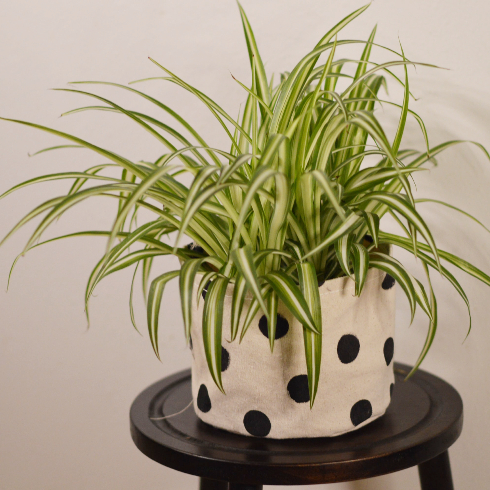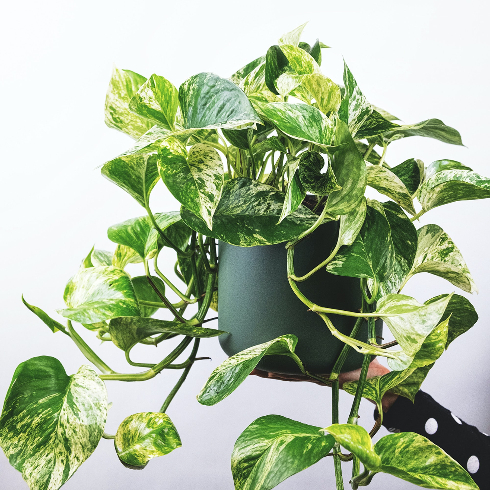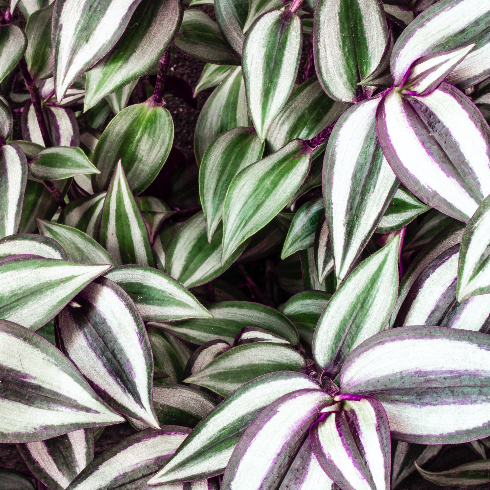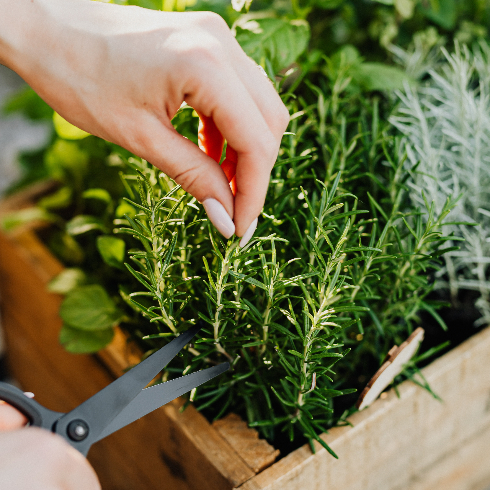One of the easiest ways you can grow your garden—whether indoor or outdoor—is to propagate your plants. When it comes to propagation, you can grow your new plant babes via seeds, cuttings, or other plant parts like leaves. When propagating plants from cuttings, AKA asexual reproduction, cuttings will first need to grow new roots before being planted. One easy method is to start new cuttings in a vessel (a clear jar so you can see the roots is great) with plain tap water. Alternatively, some cuttings do best rooting planted directly in soil. Either way, once rooted, you can plant your new seedling in a larger pot or your outdoor garden and watch it grow!

Spider Plant
One of the most beginner-friendly plants to propagate, spider plants will actually develop small plantlets that can be clipped and replanted once they have roots that reach an inch or two long. If the roots remain intact, the plantlet can be repotted in moist soil. If the plantlet has not yet developed roots, place it in a new pot atop moist soil and let it develop roots before repotting.

Marble Queen Pothos
Always a great beginner-friendly plant, the pothos is another great choice to propagate as its fast-growing and can do well in a variety of conditions. Regular pruning helps to encourage fuller growth on your mature plant, so creating cuttings will help them thrive. You’ll need at least four or five nodes on your cutting with the bottom few leaves removed. Replant the cutting once the roots have grown to about one inch (this should take about two to three weeks).

String of Pearls
This gorgeous vining succulent is extremely easy to propagate from stem cuttings, and it’s recommended to do so to keep your plant at its best (planting multiple stems in one pot will help fill it out). Cut a four to five-inch clipping and remove just the last two leaves. Let the clipping dry out for a day or two before repotting directly in soil, about an inch deep.

Mini Monstera
While not actually part of the monstera genus, Rhaphidophora plants (AKA mini monsteras) are named for their resemblance to the popular houseplant. This easy-to-care-for small climbing plant needs occasional pruning to control its size, which can be great for propagating new plant babies for yourself or your friends. Cut at least two to three nodes from your mature plant and remove the leaves from the bottom two-thirds before putting in water to root. Once the roots are about one to two inches long, your cutting is ready to be potted in moist soil.

Philodendron Brasil
This heartleaf varietal is a great choice for propagating because of its fast-growing ways. This plant will require regular pruning to encourage fuller growth—giving you the opportunity to propagate those cuttings. Start with a cutting with at least four to six leaves (you’ll want it at least four to five inches long). Remove the bottom leaves and root in water for a few weeks. Once the small white roots have grown to about one inch long, you’re ready to plant the cuttings in moist, well-drained soil.

Rope Hoya
This waxy semi-succulent is a gorgeous addition to any bookshelf or hanging planter with its visually appealing curling vines and pretty sprinkling of tiny whiteish-pink flowers. The Rope Hoya plant is a great choice for novice indoor gardeners as they’re a relatively easy plant that does well in indirect sunlight. To propagate, make a cutting from a healthy stem that is at least four inches long and contains two or three nodes. Clip off the leaves and allow the cutting to dry overnight before rooting in water. This plant can be slow to grow but requires little maintenance.

Tradescantia Zebrina
This striking pinkish purple and green plant is another easy houseplant to grow and propagate. You’ll need to cut a stem cutting with several nodes from your plant and remove the leaves from the bottom (about two thirds of the way up so that none are sitting in the water). Let the roots grow to a few inches long before repotting your cutting in soil.

Snake Plant
One of the most popular houseplants due to their easy and resilient nature that can survive even the most neglectful plant parents, the snake plant is another great choice for propagating yourself. There are a number of ways you can propagate snake plants. To do so with a cutting, using sterilized scissors or pruning sheers, cut off a long, healthy leaf from your mature plant. Submerge the cut end in water and place in partial light, cleaning the water every few days to avoid bacteria. Once an inch-long root has grown, you are ready to pot in a succulent potting mix.

Rosemary
You’ll be surprised how easy it is to propagate rosemary yourself, whether from an existing plant or herbs you bought for a recipe! This aromatic herb is always great to have on hand, so propagate cutting and add them to an existing mature plant to fill it out, that way you’ll always have some on hand for a recipe or cocktail. During the spring or summer, take a softwood growth and remove leaves, leaving only about four or five. It’s best to dip the cut end in a rooting hormone (you can purchase this online or from your garden centre). It’s best to plant the cutting directly in soil, checking back after two or three weeks to see if it has properly rooted.

String of Hearts
Popular for their adorable heart-shaped leaves, this easy vine plant is a great choice for hanging baskets in a partially sunny spot. Another fast-growing plant that makes it an ideal choice for propagation, take about two nodes worth of stem and allow to root (this can take anywhere from two weeks to two months). Once roots have formed, transform your new plant to soil and allow to grow.
HGTV your inbox.
By clicking "SIGN UP” you agree to receive emails from HGTV and accept Corus' Terms of Use and Corus' Privacy Policy.





